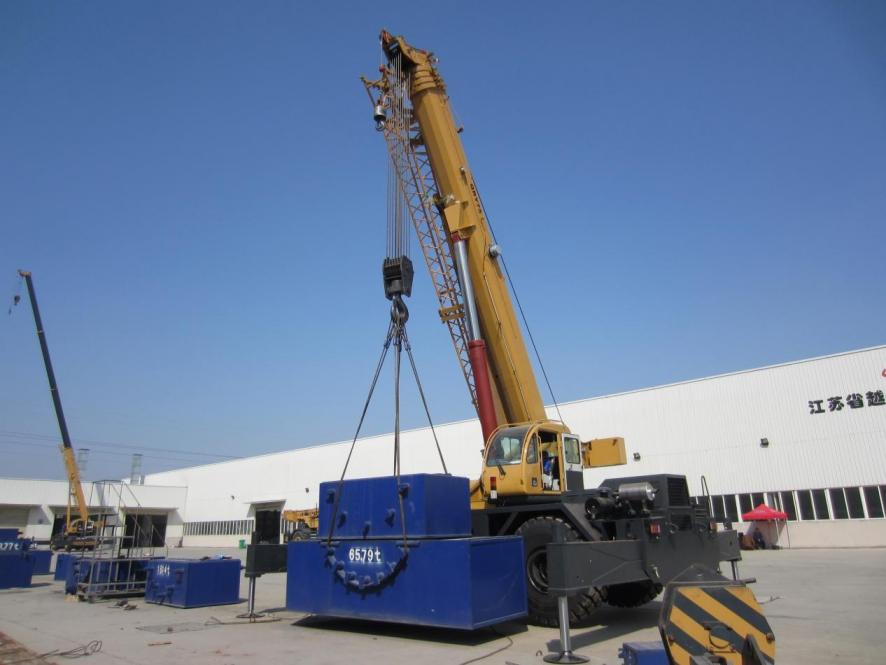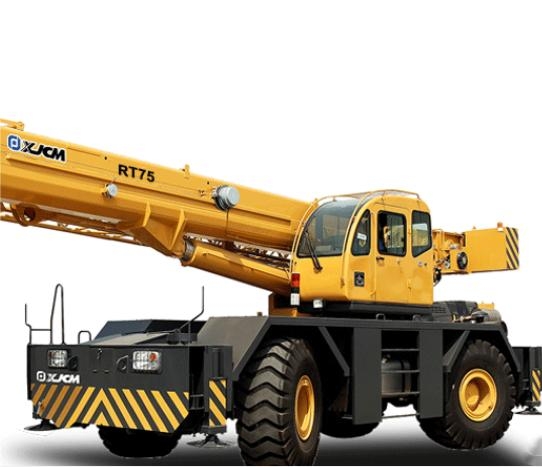What is a hydraulic crane? Hydraulic cranes are a vital piece of heavy machinery widely used in construction, engineering, and other industries that require heavy lifting. These powerful machines owe their capabilities to the principles of fluid mechanics.
In this article, we will delve into the world of hydraulic cranes, exploring their anatomy, the science behind their operation, and the advantages they offer. So, let’s harness the power of hydraulics and unveil the mechanics of heavy lifting!
What Is A Hydraulic Crane?
A hydraulic crane is a type of crane that uses fluid power to lift, move, and lower heavy objects. It utilizes the principles of fluid mechanics to convert the energy of pressurized fluids into mechanical work.
The main components of a hydraulic crane include a base, mast, jib, boom, hydraulic cylinders, and a hydraulic pump. Understanding how these components work together is essential to grasp the functioning of a hydraulic crane.
Harnessing The Power Of Hydraulics
Hydraulic cranes rely on hydraulic systems to transmit force and motion. These systems use incompressible fluids, typically oil, to transfer energy.
The hydraulic fluid is contained within a closed circuit and is pressurized by a hydraulic pump. This pressurized fluid is then directed to hydraulic cylinders, which act as actuators, generating force to move the crane’s various parts.
The Anatomy Of A Hydraulic Crane:
A monolith is made of many components, parts, and structures. A deep understanding of its structure will help you drive your hydraulic crane better and improve work efficiency.
What is a hydraulic crane of high quality? The XJCM hydraulic crane is a perfect example to delve into the anatomy and structure of a hydraulic crane. Their hydraulic cranes come in many different types of weights and types for different job sites etc.
Their rough terrain cranes as well as truck cranes are very popular lifting giants. With its impressive specifications and features, it showcases the various components that make up a hydraulic crane.
Product Information:
The XJCM hydraulic crane, a heavy-duty crane with a lifting capacity of 75 tons, is known for its excellent passing capacity, power performance, and maneuverability. It is designed to carry out all-round operations and hoisting driving without the need for outriggers.
This crane finds extensive use in heavy lifting operations at construction sites, open oil fields, warehouses, freight yards, logistics bases, and narrow spaces where short-distance transfer and lifting operations are required.
Safety Features:
The XJCM hydraulic crane is equipped with eight safety devices to ensure safe operation and prevent accidents. These safety features provide operators with peace of mind and contribute to a secure working environment.
The following is a 75-ton hydraulic crane from XJCM as an example to illustrate its structure and Anatomy:

1) Large Lifting Capacity:
The XJCM hydraulic crane boasts a lifting capacity of 75 tons, enabling it to handle heavy loads effortlessly. This feature makes it highly suitable for tasks that require moving substantial weights with precision.
2) Rugged Design:
Designed to withstand harsh weather conditions and rough terrains, the XJCM hydraulic crane is built with durability in mind. It is equipped with large, sturdy tires and a powerful engine, enabling it to operate reliably in demanding work environments.
3) Telescoping Boom:
The crane is fitted with a telescoping boom that can extend to different lengths. This feature allows the crane to reach higher elevations or farther distances, making it adaptable to a wide range of lifting scenarios.
4) Hydraulic System:
The hydraulic system is a critical component of the XJCM hydraulic crane. It provides the necessary power to lift and move heavy loads with precision and control. The hydraulic system relies on fluid mechanics principles to transmit force and motion, making it an efficient and reliable method for heavy lifting operations.
5) Operator’s Cab:
The XJCM hydraulic crane is equipped with an advanced operator’s cab. The cab features the latest technology, including cameras, sensors, and computer systems that provide real-time feedback and control. This setup enhances the operator’s visibility and situational awareness, promoting safe and efficient crane operation.
6) Easy Transport:
The XJCM hydraulic crane is designed with ease of transport in mind. Its compact design allows for easy transportation to different job sites. Additionally, the crane can be disassembled quickly, further facilitating efficient logistics and transportation.

The Science Behind Hydraulic Cranes:
Hydraulic cranes operate based on Pascal’s law, which states that when pressure is applied to a fluid in an enclosed space, it is transmitted equally in all directions.
This principle allows the force created by the hydraulic fluid to be evenly distributed, resulting in the efficient lifting of heavy loads.
When the hydraulic pump exerts pressure on the fluid, it creates a flow that is directed to the hydraulic cylinders. These cylinders, equipped with pistons, convert the hydraulic pressure into linear motion.
As the fluid enters the cylinders, it pushes the piston, extending the length of the cylinder. This extension generates a tremendous amount of force, allowing the crane to lift heavy objects.
Advantages Of Hydraulic Cranes:
Hydraulic cranes from XJCM offer several advantages over other types of cranes. Here are some notable benefits:
- High Lifting Capacity:
Hydraulic cranes can lift and move extremely heavy loads, making them ideal for construction sites and other heavy-duty applications.
- Precise Control:
The hydraulic system enables precise and smooth control over the movement of the crane. Operators can easily manipulate the lifting speed, direction, and position, ensuring accuracy and safety.
- Compact Design:
Hydraulic cranes are known for their compact and versatile design. They can access tight spaces and operate efficiently in confined areas where other cranes may not be suitable.
- Stability:
The hydraulic system provides excellent stability to the crane, allowing it to maintain balance even when lifting heavy loads at significant heights.
Final words:
What is a hydraulic crane? In conclusion, a hydraulic crane is a powerful machine that utilizes the principles of fluid mechanics to perform heavy lifting tasks. By harnessing the power of hydraulics, these cranes offer high lifting capacity, precise control, compact design, and stability.
Understanding the anatomy and mechanics of hydraulic cranes enables us to appreciate the engineering marvel behind these impressive machines.
So, the next time you witness a hydraulic crane in action, you will have a deeper understanding of its inner workings and the power of fluid mechanics.



